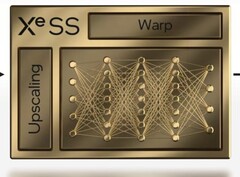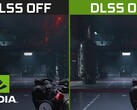Intel recently revealed that the Xe-HPG gaming GPUs will be named ARC (Alchemist) and both desktop and laptop variants will be launched in early 2022. The announcement was followed by a presentation of the XeSS technology that is similar to Nvidia’s DLSS upscaling technology and previewed it via an impressive demo. Unlike AMD’s FSR, Intel XeSS is neural network based so it should provide higher quality results. More details on this supersampling tech were provided in a new WCCFTech interview with Intel’s principal XeSS engineer Karthik Vaidyanathan.
The interview is quite extensive with plenty of details, but for those of you looking for a TLDR version, here are the most important takeaways:
- Just like DLSS 2.0, XeSS does not require training per game. This means that the general library can be easily adapted and moved between games, as we have seen with some recent DLSS third party tools. Karthik explained that the scene from the tech demo was never used to train XeSS.
- XeSS is trained with 64 samples per pixel, while Nvidia DLSS is trained with 16 samples per pixel (16K resolution images).
- XeSS will be available in two variants: XMX-accelerated exclusive to the Intel ARC GPUs, and DP4a-based that relies on Microsoft Shader Model 6.4 / 6.6. The latter version is thus compatible with Nvidia Pascal, Turing and AMD RDNA1/2 GPUs. According to a slide provided by Intel, 4K rendering on DP4a is a bit slower than XMX, but frame render times should still be considerably lower than native 4K.
- Both versions will be included in a single API, making it easier for game developers to switch between the two.
- Since XMX is exclusive to ARC, it will not support Nvidia Tensor cores and will not provide FP16/32 fallback either.
- XeSS will have multiple quality modes to suit lower-end and higher-end GPU models. Karthik noted that the performance mode aimed at lower-end GPUs should produce an image quality that is very close to the ultra quality mode so it does not take away from the visual experience like the AMD’s lower quality FSR modes, for example.
- XeSS 2.0 and 3.0 could become completely open source (including the XMX version).
Buy the Acer Swift 3X laptop with Iris Xe Max dGPU on Amazon













